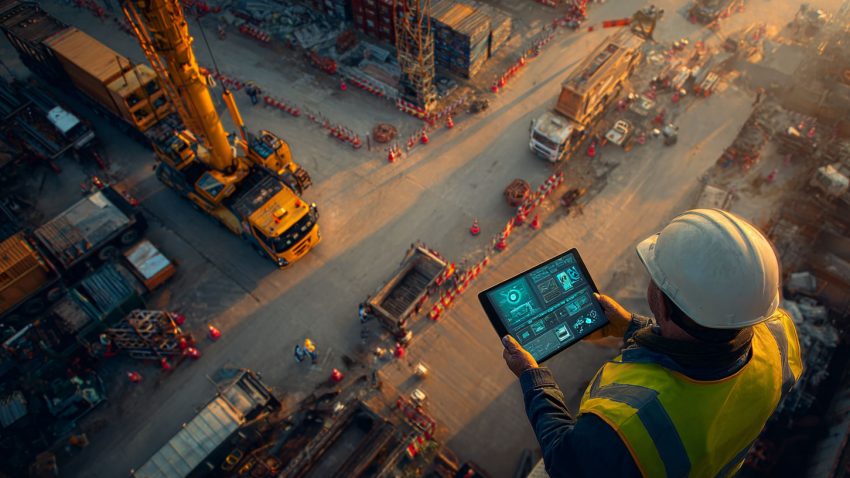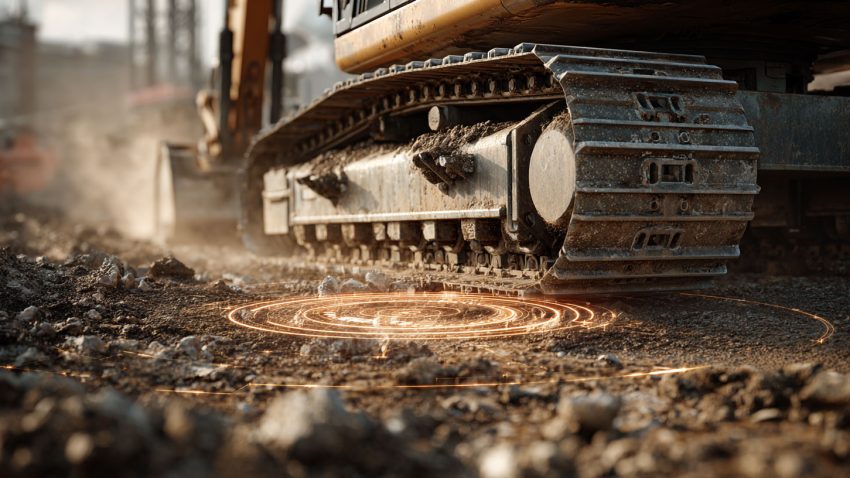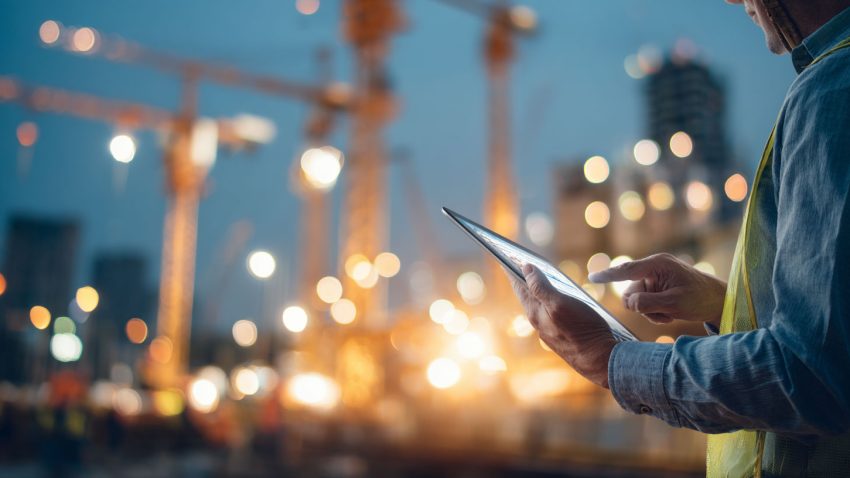Drones in Construction: Top Ways They Enhance Safety and Minimize Risks
Table of Contents:
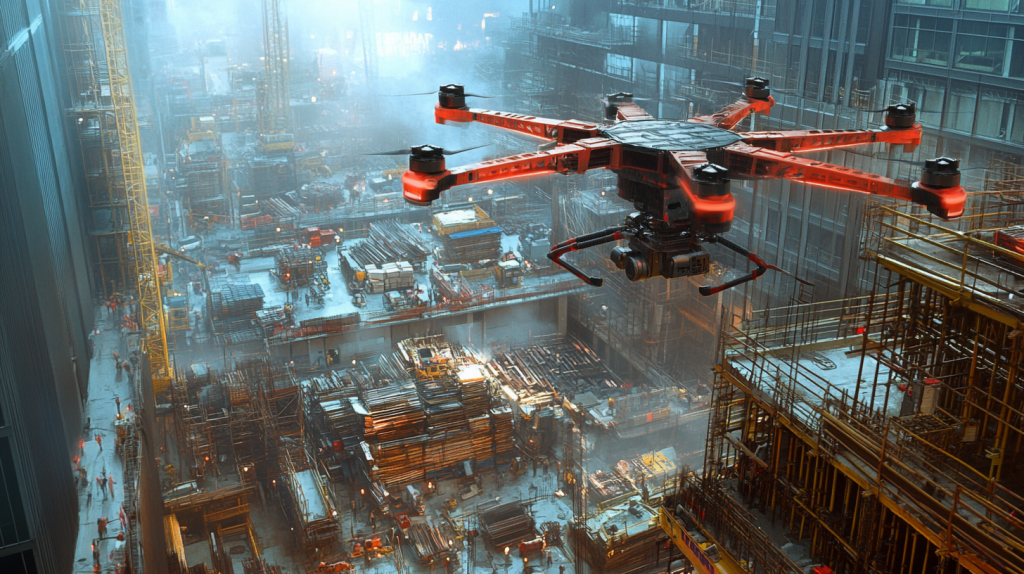
In today’s fast-paced construction industry, safety remains a top priority, and advancements in drone technology are revolutionizing how construction sites are monitored and managed. Drones, also known as Unmanned Aerial Vehicles (UAVs), are not just futuristic tools—they’re practical solutions that enhance site visibility, minimize hazards, and optimize safety protocols in real-time.
From aerial inspections of hazardous zones to real-time monitoring of worker compliance, drones offer a level of oversight that was previously impossible without significant costs and logistical challenges. Construction superintendents and safety managers are now turning to drones to improve safety audits, reduce workplace incidents, and ensure compliance with safety regulations.
This guide explores how drones are enhancing safety in construction, diving deep into their capabilities, practical applications, and best practices. Whether you manage a large infrastructure project or a small-scale build, understanding how to integrate drones into your safety protocols can help protect your team, reduce risks, and drive operational efficiency.
How Do Drones Improve Construction Site Safety?
Drones play a crucial role in improving construction site safety by providing unparalleled aerial visibility and real-time monitoring. Their ability to reach hard-to-access areas and capture high-resolution imagery allows site managers to identify hazards and potential risks without putting workers in danger.
For example, drones can inspect rooftops, scaffolding, and other high-risk structures, eliminating the need for workers to physically climb or maneuver through unstable environments. They can also monitor active equipment zones, ensuring that heavy machinery operates safely and according to protocol.
Additionally, drones are highly effective in emergency response situations. If an accident occurs, drones can quickly assess the site and provide a clear overview, helping emergency teams respond faster and more effectively.
Key Benefits
- Real-Time Hazard Detection: Identify safety risks instantly through live aerial feeds.
- Reduced Worker Exposure: Minimize the need for workers to enter hazardous zones.
- Efficient Inspections: Conduct frequent and detailed inspections without disrupting workflow.
Best Practices
- Schedule Regular Drone Safety Inspections: Conduct routine flyovers to monitor site conditions.
- Utilize Thermal Imaging Sensors: Detect heat risks or equipment malfunctions.
- Train Staff on Drone Protocols: Ensure operators are certified and trained in safety compliance.
Drones have become an indispensable safety tool on construction sites. Their ability to detect hazards, reduce worker exposure, and provide real-time updates ensures a safer and more efficient working environment.

What Are the Key Applications of Drones in Construction Safety?
The versatility of drones makes them suitable for various safety applications across different stages of a construction project. From pre-construction assessments to real-time monitoring and post-incident analysis, drones provide valuable insights that help maintain site safety standards.
One key application is aerial site surveys. Drones can map the site before construction begins, identifying unstable terrain, flood-prone areas, or other potential hazards. During active construction, drones monitor ongoing operations, ensuring that workers are following safety protocols and that equipment is functioning correctly.
Another critical use case is crisis response. In the event of an accident, drones can provide emergency teams with real-time visuals, helping them navigate the site and locate injured workers faster. Additionally, drones are used to monitor environmental conditions, such as air quality or heat levels, to prevent health hazards for workers.
Key Benefits
- Pre-Construction Hazard Assessment: Identify safety risks before work begins.
- Crisis Management: Provide real-time visuals during emergencies.
- Worker Compliance Monitoring: Ensure adherence to safety guidelines.
Best Practices
- Use Drones for Daily Safety Audits: Conduct routine checks to prevent safety breaches.
- Integrate Drone Data with Safety Software: Use platforms like StruxHub to centralize safety insights.
- Ensure Proper Documentation: Store drone-collected data for audits and reports.
Drones bring exceptional value to safety applications in construction. From preemptive hazard assessments to post-incident analysis, their role is transformative in creating a secure and compliant work environment.
Related Articles:
Best Guide to Drones in Construction: Improving Site Management and Jobsite Efficiency
45 Benefits and Tips of Construction Management Software for Superintendents
How Do Drones Support Compliance with Safety Regulations?
Compliance with safety regulations is non-negotiable in construction, and drones have emerged as powerful tools for meeting these standards. Traditional safety audits are often labor-intensive and time-consuming, but drones simplify this process by capturing detailed visual data efficiently.
For example, drones can inspect fall protection systems, scaffolding setups, and equipment placements to ensure they align with OSHA (Occupational Safety and Health Administration) requirements. These inspections can be performed regularly without disrupting ongoing work.
Moreover, drone data provides a digital record of site conditions, which can serve as valuable evidence in case of compliance audits or disputes. With drones, superintendents can identify and resolve compliance issues before they escalate into costly violations or accidents.
Key Benefits
- Detailed Inspections: Identify non-compliance in hard-to-reach areas.
- Improved Documentation: Maintain digital records of drone inspections.
- Proactive Corrections: Address compliance issues before they become critical.
Best Practices
- Schedule Routine Compliance Audits: Use drones for frequent inspections.
- Maintain Digital Records: Archive drone footage for regulatory audits.
- Collaborate with Safety Teams: Share drone data with compliance managers.
Drones provide construction teams with an effective tool for maintaining compliance with safety regulations. Their efficiency in auditing, monitoring, and documenting ensures fewer violations and safer worksites.
How Can Drones Minimize Human Error in Safety Operations?
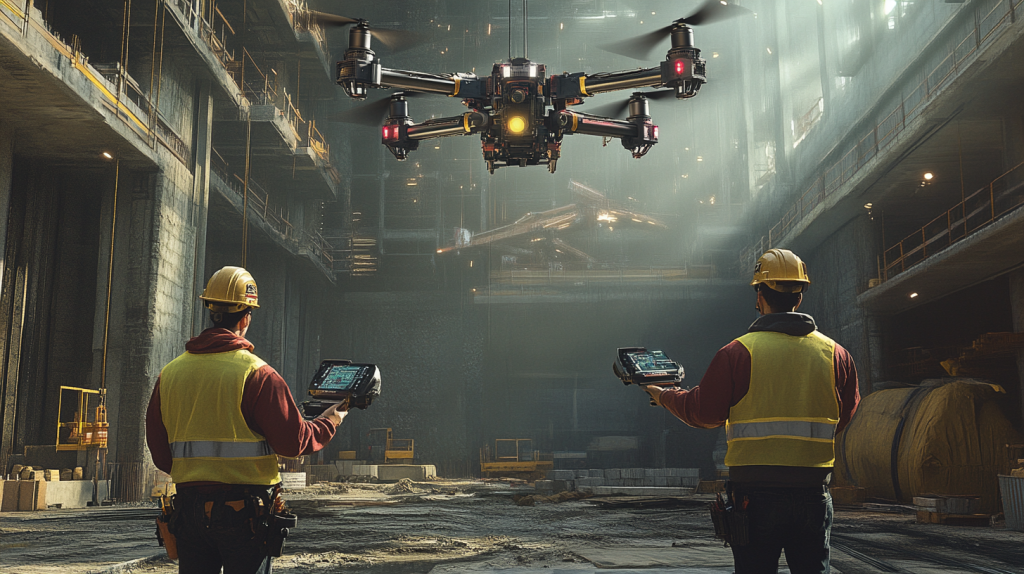
Human error remains one of the most significant causes of accidents and inefficiencies on construction sites. Fatigue, miscommunication, and limited visibility are all factors that can lead to mistakes with serious consequences. Drones have emerged as a key tool for minimizing human error by automating repetitive tasks, enhancing visibility, and providing precise data for decision-making.
Drones reduce reliance on human judgment in scenarios where accuracy is paramount. For example, inspecting scaffolding or assessing structural integrity from elevated positions often requires physical checks by workers. With drones, these tasks are handled remotely, removing the possibility of oversight caused by fatigue or miscalculation.
Additionally, drones minimize data collection inconsistencies. Manual inspections often vary depending on the skill and experience of the inspector, while drones capture standardized, high-resolution data every time. This consistency eliminates guesswork and provides a reliable basis for analysis and decision-making.
Automation also plays a critical role in reducing error. Pre-programmed drone flight paths ensure that every inspection follows the same trajectory, capturing identical data points at regular intervals. This eliminates oversights caused by missed spots or incomplete coverage.
Key Benefits
- Reduced Manual Oversight: Drones perform routine tasks with precision, eliminating fatigue-related errors.
- Standardized Data Collection: Automated flight paths ensure uniformity in inspections.
- Improved Visibility: Aerial views provide angles and perspectives that are impossible with human observation.
Best Practices
- Automate Routine Inspections: Use pre-programmed flight paths for consistency.
- Combine Drone Data with Human Insights: Blend drone data with on-ground checks for well-rounded safety assessments.
- Train Operators in Safety Protocols: Ensure drone pilots understand site-specific safety requirements.
Drones play a vital role in minimizing human error on construction sites by automating repetitive tasks, capturing consistent data, and reducing reliance on manual observation. When integrated into safety operations, drones ensure higher accuracy and fewer costly mistakes.
What Types of Drones Are Best for Construction Safety?
Not all drones are created equal, especially when it comes to the specific safety needs of construction sites. Choosing the right drone model depends on the intended application, site size, and environmental conditions. Drones used for safety inspections, for example, may require features different from those used for mapping or surveying.
Multirotor drones are the most common choice for construction safety tasks due to their stability and maneuverability. They excel at close-range inspections of equipment, scaffolding, and confined spaces. Their ability to hover in place makes them ideal for capturing detailed images and real-time video feeds.
For larger sites or topographic surveys, fixed-wing drones are more suitable. These drones cover larger areas in a shorter time and are excellent for generating high-resolution aerial maps. However, they may lack the hovering capabilities of multirotor models, making them less effective for detailed safety inspections.
Specialized drones with thermal imaging cameras are critical for safety monitoring in scenarios involving fire risks, electrical hazards, or equipment malfunctions. These drones can detect temperature anomalies that are invisible to the naked eye, helping prevent dangerous incidents before they occur.
Key Benefits
- Multirotor Drones: Ideal for close-up inspections and real-time monitoring.
- Fixed-Wing Drones: Best for covering large construction sites efficiently.
- Thermal Imaging Drones: Crucial for detecting heat-related hazards and equipment issues.
Best Practices
- Match Drone Type to Task: Choose multirotor drones for inspections and fixed-wing drones for mapping.
- Invest in Advanced Sensors: Equip drones with thermal cameras for enhanced hazard detection.
- Ensure Operator Expertise: Train teams to operate different drone types effectively.
The right drone can make all the difference in construction site safety. Whether it’s multirotor drones for inspections or fixed-wing models for large-scale surveys, selecting the appropriate UAV technology ensures better safety outcomes and operational efficiency.
Related Articles:
Top 10 Applications of Drones in Commercial Construction
Best Guide to Construction Management Software
What Are the Challenges of Using Drones for Safety, and How Can They Be Overcome?
While drones offer significant safety benefits, their adoption on construction sites comes with its own set of challenges. Regulatory compliance, data management, and operational risks are among the most common hurdles. However, these challenges can be addressed with proper planning, training, and the right tools.
Regulations and Compliance
Drones must adhere to local aviation regulations, including height restrictions, no-fly zones, and operator licensing requirements. Violations can result in fines, delays, or even project shutdowns. Superintendents must ensure drone operators are certified and aware of legal restrictions.
Technical Limitations
Battery life, connectivity issues, and sensor malfunctions can limit drone effectiveness, particularly in large or remote construction sites. Regular maintenance and investment in high-quality drones can address these technical limitations.
Data Overload
Drones generate vast amounts of data during safety inspections. Without a clear plan for data analysis and storage, this information can quickly become overwhelming. Using cloud-based project management tools, such as StruxHub, can help streamline drone data and make it actionable.
Operator Training and Expertise
Skilled drone operators are essential for successful integration into safety protocols. Insufficient training can lead to operator errors, equipment damage, or even accidents. Investing in proper drone pilot training and certifications is critical.
Key Benefits
- Clearer Compliance Guidelines: Adhering to local regulations prevents costly penalties.
- Proactive Maintenance: Regular checks minimize technical failures.
- Streamlined Data Analysis: Tools and software turn drone data into actionable insights.
Best Practices
- Stay Updated on Regulations: Ensure drone operators are certified and informed about local laws.
- Invest in Reliable Equipment: Choose high-quality drones with proven reliability.
- Centralize Data Management: Use platforms to organize and analyze drone data efficiently.
While drones present unique challenges in construction safety, these obstacles can be effectively managed through proper training, compliance, and strategic technology use. With thoughtful planning, drones become indispensable tools for improving safety outcomes.
Unlock the Full Potential of Your Construction Projects with StruxHub
StruxHub enhances efficiency and coordination across all project phases, providing a single source of truth that eliminates silos and fosters collaboration. Real-time updates, financial management tools, and seamless commvunication features ensure that all team members and stakeholders are aligned and informed, reducing the risk of errors and delays. With comprehensive solutions for document management, risk mitigation, and quality control, StruxHub maintains project integrity and safety, while mobile access and integration capabilities further enhance project flexibility and efficiency.
StruxHub’s Key Features and Benefits:
- Advanced Delivery Management: Automate and optimize your delivery schedules, ensuring materials arrive just in time, every time.
- Site Communication: Utilize georeferenced maps and instant messaging to keep every team member informed and aligned.
- Construction Materials Management: Track inventory levels and manage materials procurement with ease, reducing waste and avoiding project delays.
- Construction Safety & Inspection Workflows: Implement customizable mobile forms for conducting safety inspections and managing compliance documentation effortlessly.
- Short-Term Scheduling: Visualize project tasks with detailed floor plans, linking each activity to specific locations for better planning accuracy.
- Construction Resource Management: Efficiently allocate personnel and equipment, maximizing productivity and reducing idle time.
StruxHub’s Product Offering:
- StruxHub Deliveries: Simplifies the coordination of incoming deliveries, ensuring materials and equipment are precisely timed to project needs.
- StruxHub Logistics: Offers intelligent site logistics planning, from crane scheduling to space allocation, for smoother operations.
- StruxHub Safety: Elevates on-site safety standards with easy-to-use tools for inspections, permits, and incident reporting.
- StruxHub Scheduling: Enhances project timelines with intuitive scheduling tools that ensure tasks are completed efficiently and on time.
With StruxHub, construction companies can look forward to a streamlined, more efficient project execution that delivers on time and within budget. Embrace the power of innovation and take your construction projects to the next level.
Don’t miss out on the opportunity to optimize your construction management processes with StruxHub. Sign up for a free demo today. Let’s build smarter, together.

StruxHub
Experience the power of StruxHub today and witness firsthand how it can revolutionize your construction operations.
FAQ
What Are the Key Benefits of Using Drones for Construction Site Safety?
The integration of drones in construction site safety has revolutionized traditional safety protocols, offering unparalleled advantages in risk management, operational efficiency, and worker well-being. Drones provide real-time aerial views of construction sites, enabling superintendents to identify potential hazards and unsafe practices without endangering personnel. They can inspect hard-to-reach areas, such as rooftops, scaffolding, and unstable structures, without requiring workers to physically navigate these high-risk zones. This minimizes the chance of falls, accidents, or exposure to hazardous conditions.
One of the standout benefits of drones is their ability to conduct frequent safety inspections efficiently. Traditional inspections are often time-consuming and require significant manpower. Drones, on the other hand, can complete site surveys in minutes, covering large areas with precision. Their data collection capabilities allow superintendents to make informed safety decisions based on accurate, up-to-date information. Additionally, drones equipped with thermal imaging sensors can detect heat anomalies in machinery, electrical systems, or structures, providing early warnings of potential fire hazards or equipment malfunctions.
Furthermore, drones facilitate compliance with safety regulations by generating visual documentation of inspections, safety audits, and progress tracking. These records can serve as valuable evidence during regulatory audits, ensuring transparency and accountability. Platforms like StruxHub help integrate drone data into centralized safety management systems, enhancing collaboration between teams and stakeholders.
In short, drones improve visibility, enhance operational efficiency, and enable data-driven decision-making in construction safety. Their ability to prevent incidents proactively, combined with their cost-effectiveness and scalability, makes them an essential tool for modern construction site management.
How Often Should Drones Be Used for Safety Inspections on Construction Sites?
The frequency of drone safety inspections largely depends on the size of the construction site, the complexity of the project, and the specific safety concerns involved. However, as a general best practice, weekly drone inspections are recommended for active sites to ensure consistent monitoring and early detection of hazards. In high-risk zones, such as those with heavy machinery or elevated structures, daily drone inspections might be necessary to mitigate risks proactively.
Regular drone inspections are particularly beneficial in projects with tight deadlines and frequent changes. Construction sites are highly dynamic environments, with materials, equipment, and personnel constantly shifting. Drones allow superintendents to adapt to these changes by providing real-time insights and identifying evolving hazards. For instance, after heavy rainfall or a storm, drones can quickly assess site damage and identify areas requiring immediate attention.
Additionally, scheduled drone inspections should align with key project milestones. Before major phases, such as foundation pouring or roof installations, drone surveys can verify site readiness and ensure compliance with safety protocols. These inspections not only improve safety outcomes but also streamline workflows by reducing unexpected disruptions.
To maximize efficiency, drone data should be analyzed and stored systematically. Platforms like StruxHub help superintendents organize inspection data, identify recurring issues, and implement corrective actions. Clear documentation from these inspections also supports compliance with OSHA and other regulatory authorities.
Ultimately, the frequency of drone inspections should balance site-specific risks with operational efficiency. Whether conducted daily, weekly, or at project milestones, consistent drone inspections are a cornerstone of proactive safety management.
What Are the Regulatory Requirements for Using Drones on Construction Sites?
Operating drones on construction sites involves adhering to strict regulatory requirements established by aviation authorities, such as the Federal Aviation Administration (FAA) in the United States. These regulations ensure safe, legal, and responsible drone use in construction environments. The most fundamental requirement is that all drone operators must hold a Remote Pilot Certificate under FAA Part 107. This certification ensures that operators understand airspace rules, drone handling protocols, and emergency procedures.
Additionally, all commercial drones weighing more than 0.55 pounds must be registered with the FAA. Each drone must display its unique registration number during operations. Failing to register drones can lead to fines, legal complications, or even project shutdowns. Drone flights must also remain within visual line-of-sight (VLOS) of the operator and should not exceed 400 feet in altitude.
Restricted airspace is another critical consideration. Construction projects near airports, military zones, or densely populated urban areas may require special authorization to operate drones. Tools like B4UFLY and AirMap can help operators identify restricted zones and submit authorization requests when necessary.
Safety protocols also include pre-flight inspections, risk assessments, and contingency plans in case of equipment failure. Operators must ensure that their drones are properly maintained, with fully charged batteries, functional cameras, and updated software before every flight.
Construction companies must also address data privacy concerns, especially when drone footage captures neighboring properties or individuals. Transparent communication with stakeholders and proper data encryption can help prevent legal complications.
To streamline compliance, construction firms should document every drone operation, including flight logs, inspection reports, and operator certifications. By integrating drone operations into platforms like StruxHub, companies can centralize compliance documentation and ensure regulatory adherence throughout the project lifecycle.
How Can Drones Be Integrated with Construction Management Software?
The integration of drones with construction management software has transformed how data is collected, analyzed, and applied across project workflows. Modern platforms like StruxHub offer seamless integration with drone-generated data, allowing superintendents and project managers to make informed decisions in real-time.
One of the key advantages of integration is the ability to visualize drone data alongside project schedules and site layouts. For example, aerial imagery captured by drones can be overlaid on project plans to identify discrepancies, monitor progress, and track resource allocation efficiently. This eliminates guesswork and ensures that every decision is backed by accurate data.
Additionally, drone integration enhances collaboration among stakeholders. By centralizing drone footage, 3D site maps, and inspection reports on a cloud-based platform, teams can share updates instantly, whether they’re on-site or working remotely. This transparency fosters better coordination between architects, engineers, and construction crews.
To successfully integrate drones with construction management software, companies must train operators, establish data workflows, and prioritize software compatibility. Investing in platforms that offer robust drone integration capabilities is essential for maximizing efficiency and accuracy across all phases of construction.


